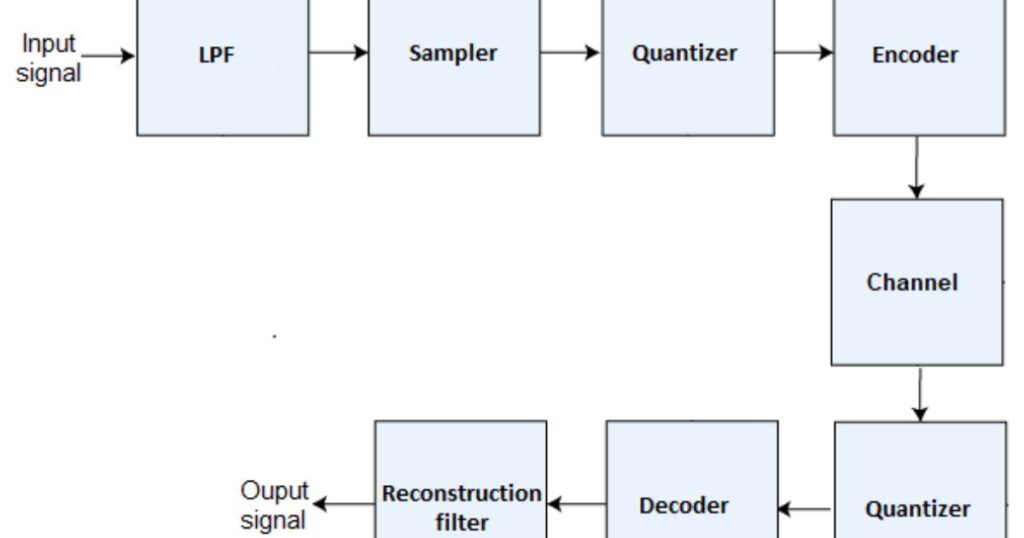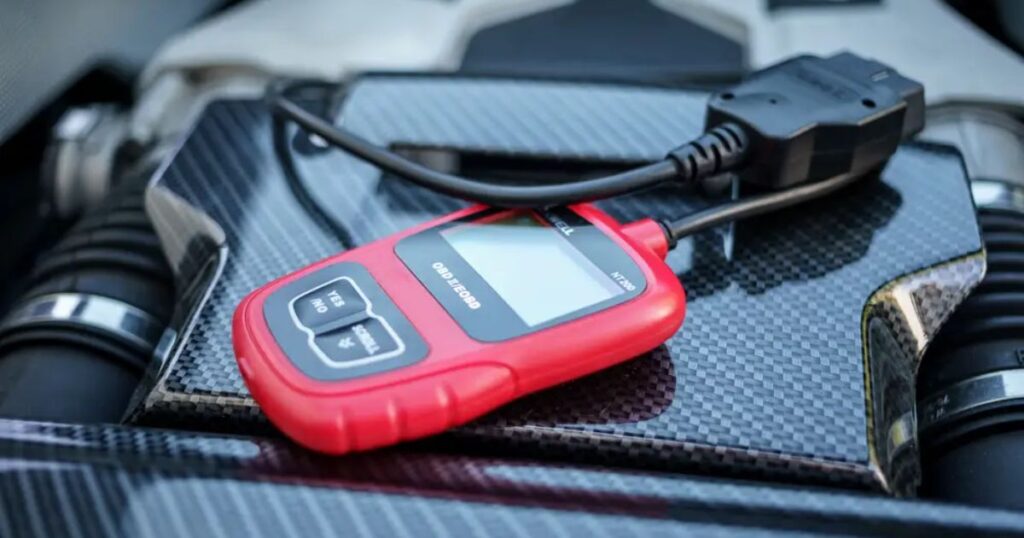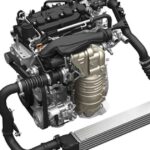As a car owner in the USA, understanding the intricate components that make your vehicle run smoothly is crucial. Among these components, the PCM (Powertrain Control Module) stands out as a vital piece of the puzzle.
In fact, it’s often referred to as the “brain” of your car’s engine management system. Buckle up as we dive deep into the world of PCMs and explore everything you need to know about this essential automotive component.
Demystifying the PCM – What It Is and Why It Matters
At its core, the PCM is a sophisticated computer that oversees and regulates various critical systems within your vehicle. It’s a microprocessor that acts as the command center, ensuring seamless communication and coordination among different components.
Without the PCM, your car would be like a orchestra without a conductor – a chaotic mess.
Here are the key functions the PCM manages:
- Engine Performance: The PCM controls crucial aspects of engine operation, such as fuel injection, ignition timing, and variable valve timing, ensuring optimal performance and efficiency.
- Transmission Control: It governs the shifting of gears in your transmission, making sure the right gear is engaged at the right time for a smooth driving experience.
- Emissions Regulation: By monitoring and adjusting the air-fuel ratio, the PCM helps your vehicle meet stringent emissions standards set by the Environmental Protection Agency (EPA).
- Diagnostic Capabilities: The PCM continuously monitors various sensors and systems, alerting you to potential issues through the infamous “Check Engine” light on your dashboard.
Essentially, the PCM plays a pivotal role in your car’s drivability, performance, fuel economy, and emissions compliance. Neglecting its maintenance can lead to a cascade of problems, making it a component you simply can’t afford to ignore.
How Does a PCM Work Its Magic? (A Simple Breakdown)

Think of the PCM as the conductor of your car’s symphony – it orchestrates the intricate dance of various components to create a harmonious driving experience. Here’s a simplified breakdown of how it works its magic:
- Monitoring: The PCM constantly receives data from a network of sensors strategically placed throughout your vehicle. These sensors monitor everything from airflow to the engine, coolant temperature, wheel speed, and more.
- Processing: The incoming data is then processed by the PCM’s microprocessors, which analyze and interpret the information to understand the current state of your car’s systems.
- Decision-Making: Based on the processed data, the PCM makes split-second decisions on crucial aspects like fuel injection, spark plug firing, and transmission shifting to ensure optimal performance.
- Controlling: Finally, the PCM sends commands to various actuators (such as fuel injectors, ignition coils, and solenoids) to execute the necessary adjustments and keep your car running smoothly.
This intricate dance happens continuously, with the PCM making thousands of calculations and adjustments per second – all while you enjoy a seamless driving experience.
Telltale Signs Your PCM Needs Some TLC
Like any other component, the PCM can develop issues over time or due to external factors. Being aware of the following symptoms can help you catch problems early and prevent further damage:
- Check Engine Light: This infamous dashboard light is often the first indicator that something is amiss with your PCM or other related systems.
- Poor Fuel Economy: A faulty PCM can cause your engine to run inefficiently, leading to a noticeable drop in gas mileage.
- Rough Idling or Stalling: If your engine struggles to maintain a smooth idle or stalls unexpectedly, the PCM could be the culprit.
- Transmission Issues: Erratic gear shifts, slipping gears, or transmission warning lights can all point to a PCM problem.
- Failed Emissions Test: Since the PCM regulates emissions, a failing score on your vehicle’s emissions test could indicate a PCM malfunction.
If you notice any of these warning signs, it’s crucial to have your PCM inspected by a professional as soon as possible. Ignoring the issue could lead to further complications and costly repairs down the line.
Also read this Post: GENESIS CARS AND WHAT SETS THEM APART
DIY Diagnosis – How to Test Your PCM (Step-by-Step Guide)
For the more hands-on car enthusiasts, here’s a step-by-step guide to help you diagnose a potential PCM issue yourself:
- Visual Inspection: Start by visually inspecting the PCM for any signs of damage, such as burn marks, cracks, or loose connections. Use a flashlight to get a better view if necessary.
- Check Battery Voltage: A low battery voltage can cause the PCM to malfunction or behave erratically. Use a multimeter to ensure your battery is providing the correct voltage (typically between 12.6 and 14.7 volts).
- Scan for Diagnostic Trouble Codes: Connect an OBD-II scanner to your vehicle’s diagnostic port (usually located under the dashboard) and scan for any trouble codes related to the PCM. These codes can provide valuable insights into the nature of the problem.
- Inspect Wiring and Sensors: Carefully examine the wiring harness and connectors leading to the PCM, as well as the various sensors it relies on (such as the mass air flow sensor, throttle position sensor, and camshaft position sensor). Look for any signs of damage, corrosion, or loose connections.
- Attempt a Replacement (If All Else Fails): If all other components check out and you’ve eliminated potential issues, you may need to consider replacing the PCM itself. However, this should be a last resort, as PCM replacements can be costly.
If you’re uncomfortable performing these tests yourself or feel uncertain about the results, it’s always best to seek professional assistance from a qualified mechanic or dealership technician.
The Cost of Replacing a Faulty PCM (And How to Save)
Unfortunately, replacing a faulty PCM can be a significant expense for American car owners. On average, you can expect to pay between $800 and $1,500 for a new PCM, with the cost varying depending on your vehicle’s make, model, and year.
The majority of this cost stems from the PCM itself, as it’s a highly specialized and complex component. Labor costs, while not insignificant, typically account for a smaller portion of the total expense.
To help mitigate these costs, consider the following cost-saving strategies:
- Used or Rebuilt PCMs: Purchasing a used or rebuilt PCM from a reputable supplier can save you a significant amount of money compared to buying a brand-new unit.
- Negotiating Labor Rates: If you opt for professional installation, don’t be afraid to shop around and negotiate labor rates with different mechanics or dealerships.
- DIY Replacement (If Experienced): For those with advanced automotive skills and access to the necessary tools, attempting a DIY replacement can eliminate labor costs altogether. However, this should only be considered if you’re confident in your abilities, as improper installation can lead to further issues.
Remember, while the upfront cost of replacing a PCM may seem daunting, it’s a worthwhile investment to ensure the long-term health and performance of your vehicle.
Neglecting a faulty PCM can lead to increased fuel consumption, decreased performance, and even costlier repairs down the line.
To illustrate the importance of timely PCM replacement, consider the following case study:
Case Study: The Cost of Neglecting a Faulty PCM

John, a 32-year-old software engineer from San Francisco, had been experiencing intermittent issues with his 2015 Honda Civic for several months.
The “Check Engine” light would come on sporadically, and he noticed a decrease in fuel efficiency. Despite these warning signs, John decided to ignore the problem, hoping it would resolve itself.
Fast forward six months, and John’s car began to experience more severe issues, including rough idling, stalling, and transmission problems.
Upon taking it to a mechanic, he was informed that the root cause was a failing PCM, which had caused significant damage to other components over time.
The total cost of repairs, including a new PCM, a replaced catalytic converter, and labor, amounted to a staggering $3,200 – a sum that could have been significantly reduced had John addressed the issue earlier.
This case study underscores the importance of being proactive and addressing PCM issues promptly, as neglecting them can lead to a domino effect of costly repairs.
In summary, while the upfront cost of replacing a PCM may seem daunting, it’s a worthwhile investment that can save you from even more expensive repairs down the line. By being proactive and addressing issues early, you can ensure the longevity and optimal performance of your vehicle.
Conclusion
Understanding the PCM’s crucial role in your car’s operation is an essential part of being a responsible and informed American driver. This advanced computer module acts as the brain of your vehicle, orchestrating various systems to ensure optimal performance, fuel efficiency, and emissions compliance.
Throughout this comprehensive guide, we’ve explored the intricate workings of the PCM, the telltale signs of a potential issue, and the steps you can take to diagnose and address problems.
We’ve also delved into the cost considerations associated with PCM replacement and provided valuable strategies to help mitigate expenses.
Remember, neglecting a faulty PCM can have far-reaching consequences, leading to a cascade of problems and even costlier repairs down the line. By being proactive and addressing issues promptly, you can ensure the longevity and reliable performance of your vehicle.
So, the next time you notice any unusual symptoms or that dreaded “Check Engine” light illuminates, don’t hesitate to have your PCM inspected.
A little preventive maintenance can go a long way in saving you from potentially expensive headaches in the future.
Lastly, don’t forget to share this valuable information with fellow American car enthusiasts and owners.
Spreading awareness about the importance of PCM maintenance can help create a community of informed and responsible drivers, ultimately contributing to safer roads and more reliable vehicles for all.
Stay vigilant, stay informed, and keep that PCM in top shape – your car (and your wallet) will thank you!
Frequently Asked Questions
What is the function of the PCM?
The PCM oversees numerous vehicle functions, such as fuel injection, ignition timing, variable valve timing, and transmission shifting. It achieves this by gathering data from sensors across the vehicle and using it to fine-tune the actuators for optimal performance.
What are the indications of a malfunctioning PCM?
Signs of a faulty PCM may manifest as diminished performance, decreased fuel efficiency, difficulty starting the engine, transmission irregularities, or a persistent check engine light.
How is a problematic PCM diagnosed?
Diagnosis of a PCM issue typically involves using a professional-grade scan tool. This tool reads the trouble codes transmitted by the PCM when it detects an anomaly. Trained technicians interpret these codes to pinpoint the problem’s source.
Is it possible to repair a malfunctioning PCM?
Repairs on a malfunctioning PCM are feasible in certain cases. This usually entails replacing defective components and subsequently reprogramming the PCM. However, replacing the entire PCM may be more cost-effective in many instances.
Can a PCM undergo reprogramming?
Absolutely. Reprogramming a PCM is often necessary when installing a new PCM or implementing vehicle modifications that affect engine performance.







